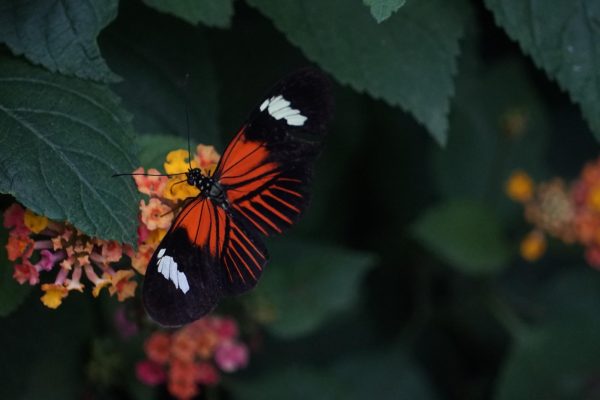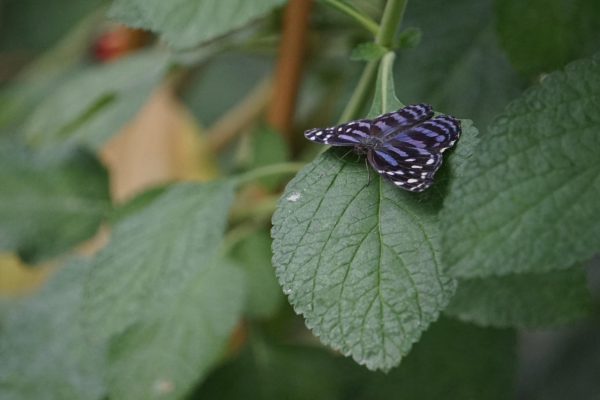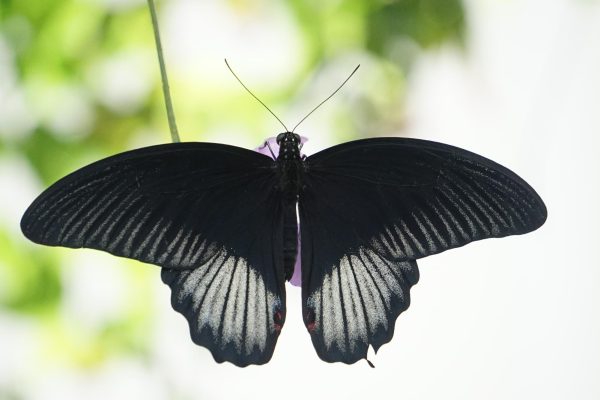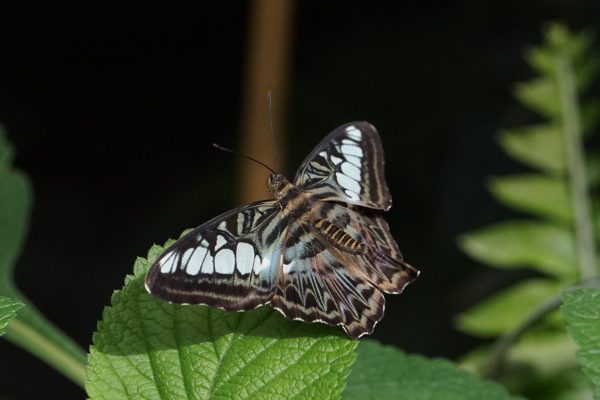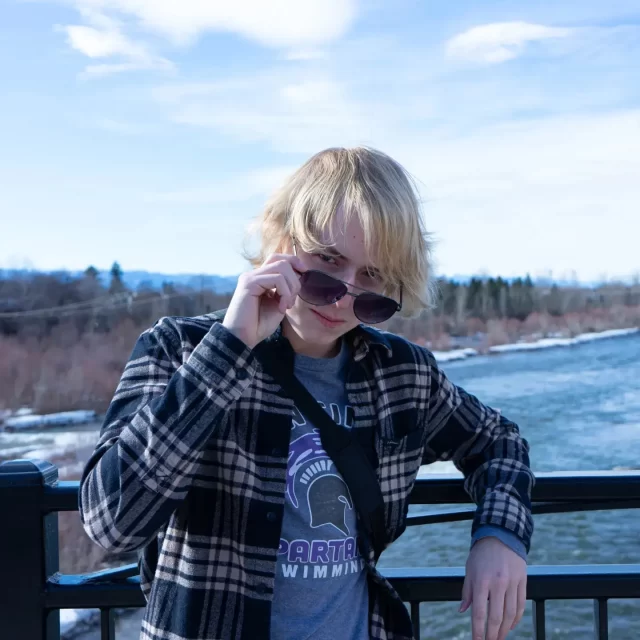A Doris Long Wing drinking nectar from a flower
With a wingspan of 2.5-3.5 inches and a beautiful color palette shared throughout the Helicon family, the Doris Long wing is one of the many Long Wing subspecies originating from central America and the Amazon Rain forest. While they may be small in size, with the right camera and the right lens you can capture its many intricate details.
A Mexican Blue Wing resting on a leaf
The Mexican Blue Wing boasts beautiful deep blue throughout its 2-3 inch wingspan and mixes this color beautifully with black and white accents. These beautiful butterflies can be found around Central America (and who’da guessed, Mexico). Over time, Mexican Blue Wings have come to prefer getting their nutrients from fruit rather than from nectar; if you go to any butterfly exhibit, you’ll likely find them enjoying some fruit left out by their caretakers.
A Tailed Jay resting on a plant
The Tailed Jay is a very unique butterfly, boasting almost neon green wings and a unique spread out pattern. The Tailed Jay primarily originates from Asia in places like Dubai, India, and Sir Lanka, but has also been found partly originating from Australia. The Tailed Jay is known as a very active butterfly, often fluttering their wings even when feeding off flowers. They are almost always on the move.
A Scarlet Mormon enjoying some nectar
With a massive wingspan on 4.5-5.7 inches, the Scarlet Mormon are butterflies that will definitely catch your eye. This Scarlet Mormon in particular sports a mostly monochromatic color palette and can be traced to originating from the Philippines. The Scarlet Mormon is one of the few butterfly species to have significant identifiers for the gender of the butterfly, with females sporting much more scarlet accents on their wings as compared to males.
A Blue Clipper watching over other butterflies
The Clipper is another butterfly whose origins can be traced back to South and Southeast Asia. With a wide color palette and its many small details found in its patterns, this butterfly manages to stand above the rest. The many different patterns found on the Blue Clipper leaves it to be a very visually unique butterfly.
Thanks for reading this far! This essay was a really fun one to do, as live subject photography is my favorite kind of photography. I’ve always thought butterflies were fun to photograph, when I got the chance of course, but this essay wouldn’t be possible without Missoula’s Butterfly House (which I can’t recommend enough). The bright foliage in the butterfly house combined with their massive array of beautiful butterfly species lends to tools to create many interesting photo opportunities. Yet again, a massive thank you from me and the whole staff here at The Spartan Scoop for your support and interest in our newspaper!



